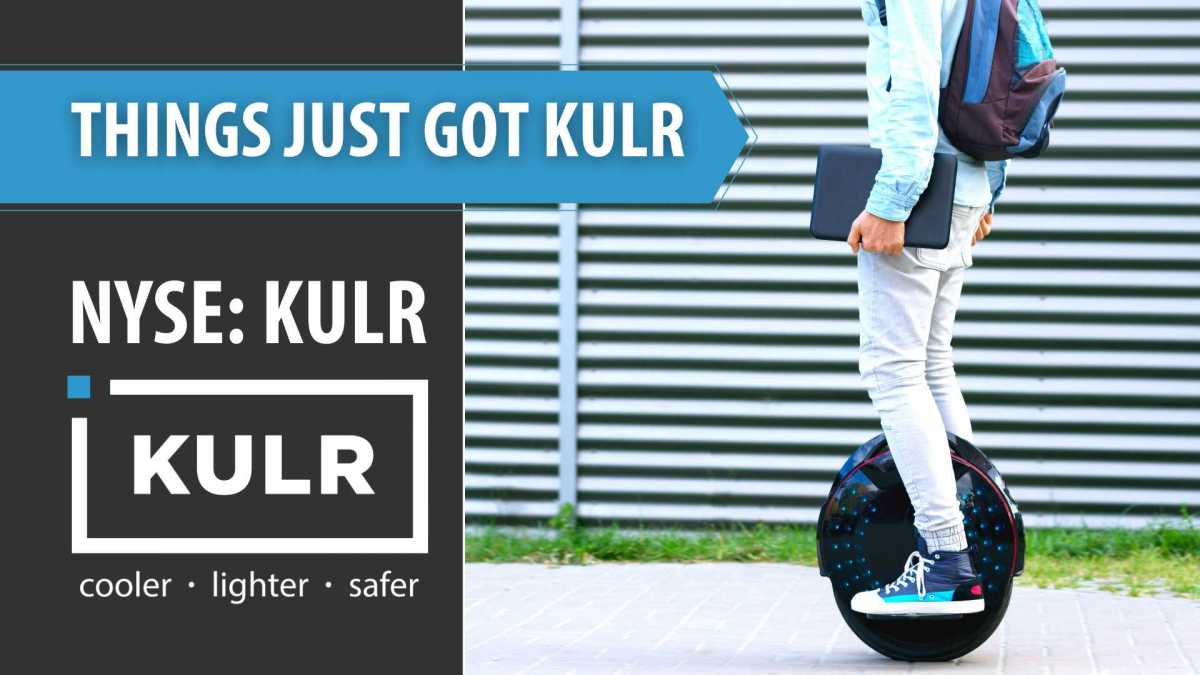Over the last decade, advances in electronics and lithium-ion batteries have delivered to mass markets a swath of incredible innovations. Drones now deliver packages, electric-powered cars drive themselves, robots vacuum our floors, “smart” appliances manage basic, daily operations of our homes, and virtual offices enable many businesses to operate amid the COVID pandemic. Space exploration has also taken great strides thanks to electronic innovation. This fall, NASA’s Perseverance rover will head to Mars to look for signs of life, and SpaceX is working to commercialize space travel. The potential of electronics appears limitless, save one significant factor: heat management.
Simply put: powerful batteries can reach high temperatures that affect performance, safety and reliability. New applications of electric batteries are progressively powerful and often require advanced forms of thermal management or cooling technologies. As we explore new frontiers in space, transportation and the consumer markets, the need for battery-cooling technology has never been greater.
Scalable Business Model Launches KULR into Space
In 2013, electrical engineer and computer scientist Michael Mo partnered with Tim Knowles, an expert in thermal management for aerospace, to create KULR Technology Group, Inc. (NYSE: KULR). Mo and Knowles recognized the need for safe, high-performance thermal management solutions for electronics and lithium-ion batteries, and combined their expertise to commercialize their proprietary technology in mass market applications such as electric vehicles (EV), laptops and smartphones.
Within a few years, the scalability of KULR’s technology drove the company into significantly larger arenas, attracting high-profile customers and Tier-1 aerospace operators such as the U.S. government, Boeing, Lockheed Martin, JPL and NASA. In 2017, KULR was awarded a contract in the upcoming Mars 2020 Rover mission – for which the company’s proprietary thermal management technology is part of an instrument called SHERLOC, the eyes and ears of the rover as it searches for signs of life on Mars.
KULR’s technologies have been used in numerous aerospace endeavors, including the International Space Station and classified government projects. With its bater safety solutions gaining traction in commercial markets, the company doubled the number of customers in its pipeline in 2018-2019 and continued to improve its scalability.
Headwinds Return Focus to Mass Commercialization
When COVID-19 stormed onto the scene earlier this year, CEO Mo and his team quickly analyzed the potential effect of the virus on company operations and how to best minimize the impact of a slowdown in commercial customer activities.
In response to the findings, KULR reduced its operating expenses, focused on pending and potential government contracts, and renewed its original focus on mass market applications.
As the company adjusted its footing in the marketplace, KULR benefited from its lineup of government defense customers and NASA, which provided a pipeline of ongoing and pending projects and funding commitments.
“The goal is to leverage our long-standing relationship with the U.S. Department of Defense and NASA, further strengthen our research and development (‘R&D’) with government funding, increase industry awareness of our world-class battery safety and electronics thermal management technologies, and expand our channels into mass commercialization,” Mo stated in a recent news release.
The company also entered into a license and supply agreement with Americase, LLC, a Texas-based designer and manufacturer of commercial-duty carrying cases for the military, airlines, oil and gas wireline services and other types of transportation. The agreement granted Americase use of KULR’s passive propagation resistant (PPR) technology, and named KULR as the supplier of PPR materials for Americase’s Battery Bag products.
“We expect more of these partnerships in the area of battery safety, energy storage, and 5G thermal management, and will continue to explore creative business models with customers to create win-win partnerships and lower our capex spending. We continue to expand our PPR battery design and internal short circuit (‘ISC’) battery testing customer engagements into energy storage, electrical transportation and aviation markets,” Mo stated.
Backed by solid footing in commercial business, KURL has turned its focus to mass commercialization of its proprietary technology. As the world of electronics hurls toward a new decade and powerful era of innovation, the timing couldn’t be better.
Multi-billion Dollar Opportunity
The proliferation of EVs, cloud computing, artificial intelligence (AI) and 5G deployment – along with the demand for more data, faster networks and smaller devices – has driven demand for lithium and cobalt, which are essential elements of the electric batteries that power many of our devices. In turn, the market for better heat management of electric-powered batteries is maturing into a multi-billion-dollar industry.
Electric batteries get hot under pressure, causing their performance to suffer and posing significant safety risks. Sony, Boeing, Tesla, UPS and Samsung all made headlines when the electric batteries in their products overheated and caught fire. Such incidents underscore increased demand for improved battery safety.
Efficient thermal management is essential to the evolution of electronics, and KULR’s high-performance, space-proven thermal management products address the increasing cooling demands of next-gen electronics and battery systems.
According to Market and Markets Research, by 2030, 27 million EVs will be on the road, marking drastic hike from the 3.3 million EVs on the road in 2019. Meanwhile, surging demand for electronic-powered devices is expected to push the global thermal management market to hit $100 billion by 2024, according to Allied Market Research.
The decision to extend its technologies into mass market applications such as EVs, puts KULR in a strong position to capture its share of the blazing market thermal management market.
Outlook
After adjusting its stance and tightening its books, KULR in June forecast Q2 2020 revenue growth of more than 200% year-over-year and said it expects cash flow break-even by Q4 2020.
In a recent interview with SmallCapVoice.com, Inc., Mo acknowledged the company has hard work ahead, but voiced his optimism on current projects, incoming government contracts, and a pickup in demand from EV vendors and other commercial customers.
“We’re very confident that some of our relationships … will pan out and pave the way for the rest of 2020. We’re really looking for 2021 to be the big deployment and the growth year on some of the commercial fronts,” he stated.
For more information, visit www.kulrtechnology.com


